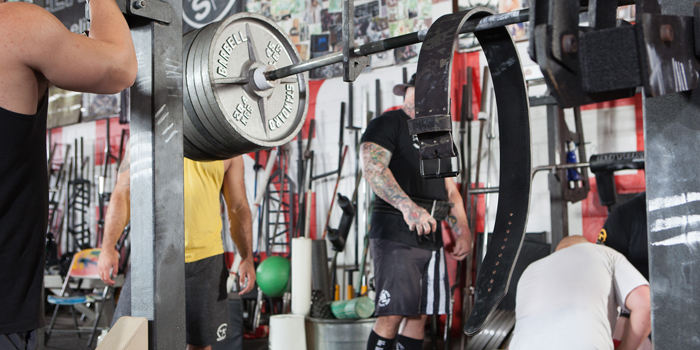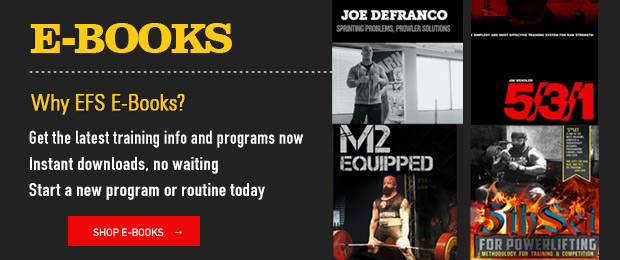
This is Part 4 of a series on my take on conjugate, Westside, concurrent, or whatever the heck everyone is calling it these days. What I am talking about is the four-day per week rotation consisting of two max effort days and two dynamic effort days developed and popularized by Louie Simmons. There are many articles on elitefts about this method. This is my interpretation, adaptation, and application of it.
The real magic of conjugate isn’t in the programming. Yes, the system is laid out to develop different aspects of strength simultaneously. Yes, the system’s aspects build upon each other as a lifter approaches the meet. Yes, the system will allow you to become stronger. But simply following the program isn’t what is going to determine the outcome.
RECENT: 5 Repeated Effort Method Principles to Master
What is?
How you execute the program is. How you train is. The effort you put in will produce the results. It's how deep you dig. It's how much confidence you have in yourself. Balls and attitude, as Clint Darden puts it. Going for it with the intention to improve. Getting fired up, finding intensity, and channeling it into the session.
The max effort method will not work unless you are pushing for a truly maximal load. It won’t work if you stop at what feels kind of heavy. The dynamic effort method will not work unless you are putting everything you have into the bar. It won’t work if you are only moving the bar quickly because it is light. The repetition method will not work on your accessory work unless you are going deep into the set. It won’t work unless you are stimulating your tissues to grow.
Conjugate always works. If it doesn’t, don’t question the program — question your application. You know what, though? The same can be said for almost every method of strength training. It's not what you do that is going to make the difference; it's how you are doing it.
In Conclusion
The purpose of this series was to get you thinking about your training. To get you thinking about how you can manipulate the max effort, dynamic effort, and repeated effort methods to fit your needs. To get you thinking about what you can do to get the most from these methods. To get you to understand that conjugate isn't a set of percentages or a template, but a fluid system that can be adapted and experimented with over time.
Over the last six years, I have made more mistakes than I've gotten things right. I've tried more things that didn't work than did. I've experimented, I've had failures, I've had victories, but most importantly, I've learned.
I am still a long way from having everything even close to figured out. Through the mistakes, I have gotten stronger. I have gotten better as a lifter. I have gotten better at knowing what works and what does not. I have gotten better at knowing when to push and when to back things down.
If you are going to try to figure conjugate out, you won't get it perfectly on your first go. That's not to say that you shouldn't try, though.
Understand the methods and understand what you are trying to achieve. Try and miss the mark. Then, try to understand what didn’t work. Then, try to fix your mistakes. That is how you are going to improve, and that is how you are going to get closer to making the system work for you.
Seth Albersworth is a powerlifter with experience in and out of gear. His best totals are 2,000 pounds raw and 2,403 pounds multi-ply. Seth has completed his bachelor's degree in kinesiology from the University of Calgary and is currently studying to become a Doctor of Chiropractic at Palmer College of Chiropractic's Florida Campus.











Most mistakes = most wisdom.